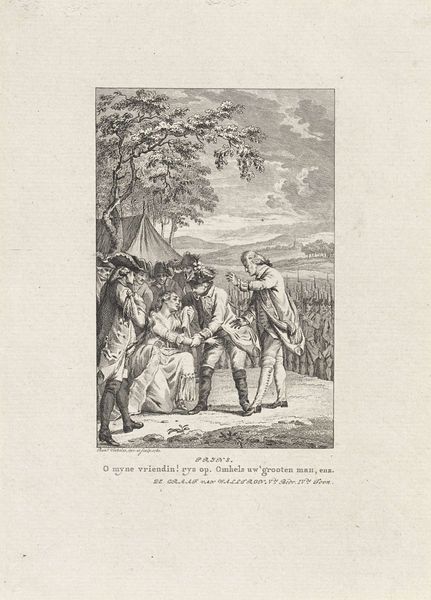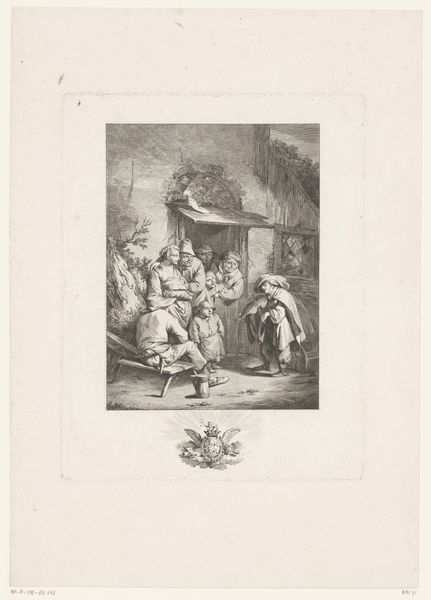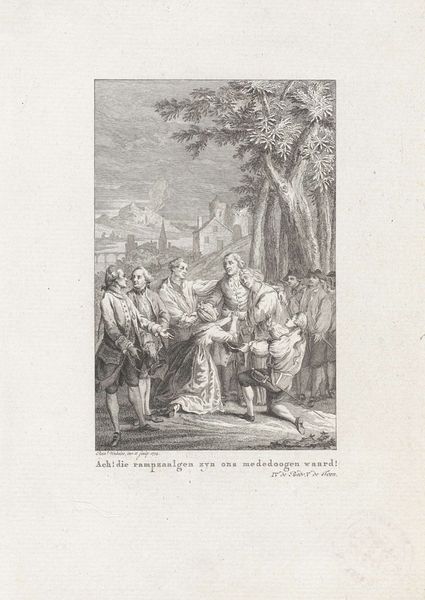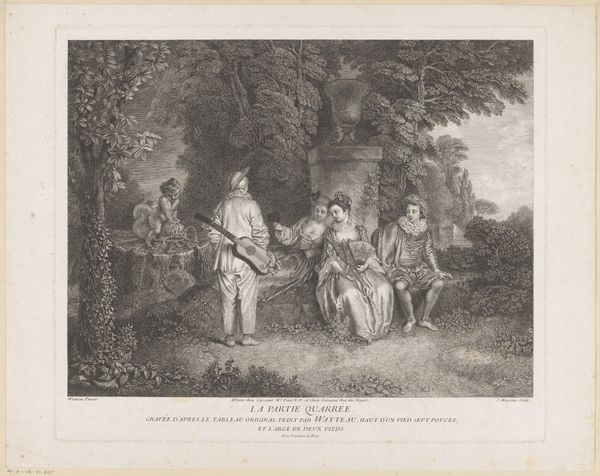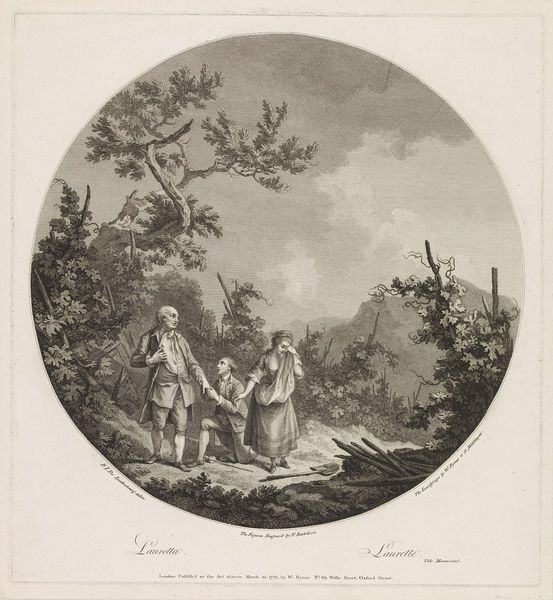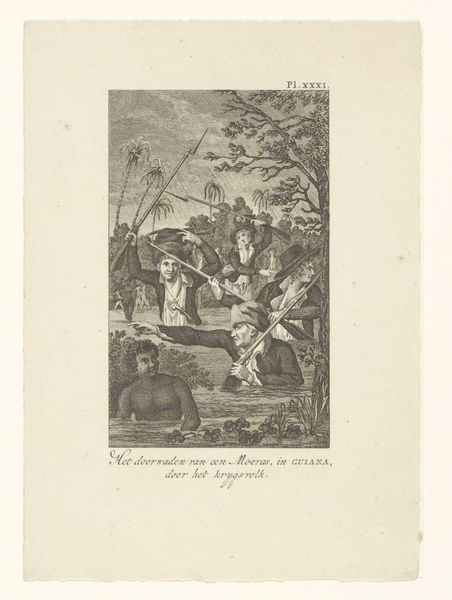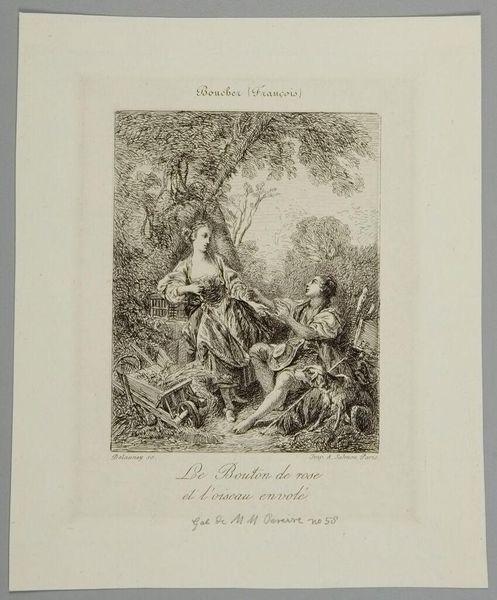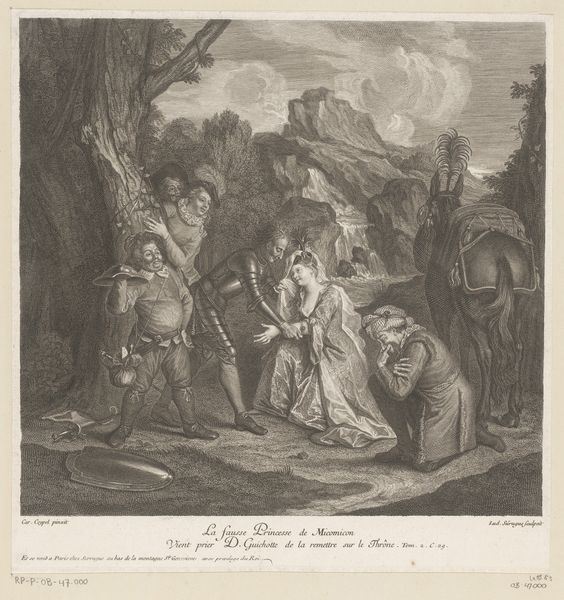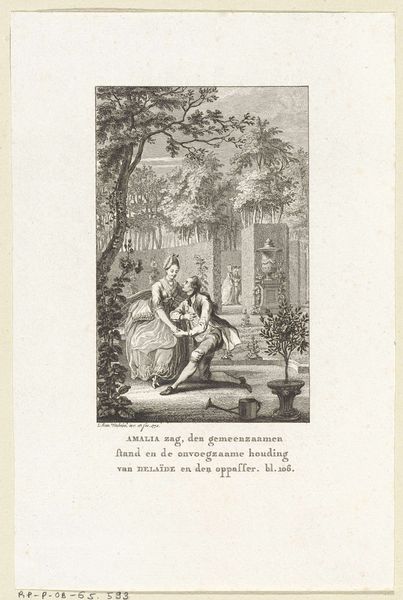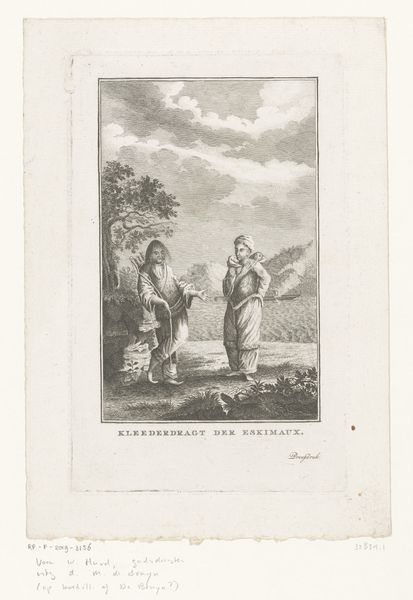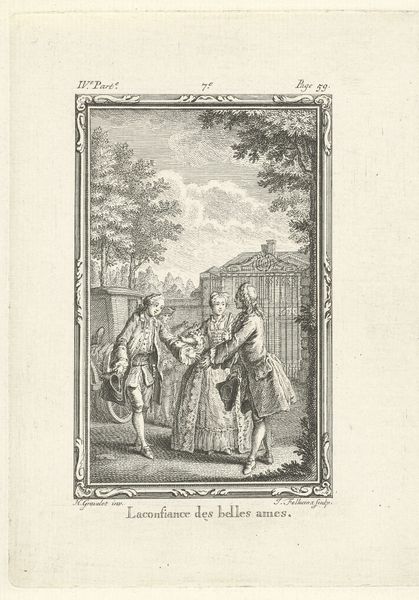
print, engraving
#
narrative-art
# print
#
old engraving style
#
landscape
#
romanticism
#
genre-painting
#
engraving
Dimensions: height 144 mm, width 111 mm
Copyright: Rijks Museum: Open Domain
Editor: This is "Hunter with game and dog resting near a house" made sometime between 1807 and 1855 by Johannes Alexander Rudolf Best, an engraving. I am struck by how carefully positioned each figure is; the hunter and dog almost like a family portrait in the foreground and a bustling tavern scene just behind them. How do you interpret the arrangement of the scene? Curator: This idyllic scene vibrates with the energy of symbolic relationships. Notice the positioning of the figures in relation to the house - it provides a sense of depth but also social standing. Who is 'allowed' inside? Who remains outside? What are their roles? Editor: So, the inside/outside dynamic is crucial? I was thinking more about the contrast between the resting hunter and the lively group around the table. Curator: Exactly, and within that contrast lies a key cultural symbol. The hunter, returning with the spoils, represents provision, masculinity, and a connection to the land, whilst those inside embody a certain dependency, especially within this specific romantic context. Does this remind you of other similar romantic depictions? Editor: Now that you mention it, the dynamic echoes familiar depictions of family and community in similar genre scenes of the period, all idealized of course. But it also seems to have an air of old folk tales. Curator: Yes! And do you see any of the typical romantic tropes of that era and its symbol systems embedded in this everyday landscape? Editor: Well, now that I am looking closer, the details start adding a lot of visual richness... The engraving seems simple at first glance, but actually conveys more complex meaning than initially obvious. Curator: Indeed, sometimes what seems straightforward is cleverly encoded, inviting closer inspection and contextual analysis!
Comments
No comments
Be the first to comment and join the conversation on the ultimate creative platform.
